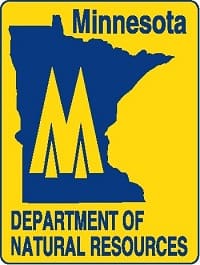Minnesota DNR Revisiting Deer Population Goals; Offers Online Sign Up

People interested in providing input as the Minnesota Department of Natural Resources (DNR) begins its efforts to set deer population goals for southeastern Minnesota can sign up for regular information updates at www.mndnr.gov/deer.
From 2005-07, the DNR used an extensive public input process to establish deer population goals for all of the state’s deer permit areas. Beginning in 2012, the DNR initiated a public process to re-evaluate population goals. So far, new goals have been established for 23 deer permit areas.
“In some places, population goals were established nearly ten years ago,” said Leslie McInenly, DNR big game program leader. “It is appropriate at this point to evaluate our progress, review new information and check in with citizens to decide whether adjustments should be made.”
McInenly said the DNR will focus on permit areas in southeastern Minnesota during 2014 to test out additional communication tools and input opportunities. Deer permit areas to be evaluated include areas 341, 342, 343, 344, 345, 346, 347, 348 and 349. The DNR hopes to complete goal setting for the rest of the state by 2017.
Similar to past deer goal setting processes, a citizen advisory team will be convened to develop permit area recommendations. In addition to recent hunter and landowner surveys conducted in the southeast, members of the public will be asked for input through online and in-person comments prior to the advisory team meetings.
A timeline, with opportunities for public input, is available on the deer management page at www.mndnr.gov/deer. Nominations for advisory team members will be collected through Dec. 31. Public input will be collected online and through meetings during January and February.
“Our public participation process has been designed to include input from anyone who has an interest in deer management,” McInenly said. “Citizen-team members will also be selected to represent the range of public interests, including hunting, wildlife viewing, natural resource management and local business interests.”
McInenly encouraged stakeholders to start thinking about deer management and factors that should be considered during the upcoming process.
Minnesota’s deer population has swung significantly during the past 50 years. In 1971, for example, the state closed the deer hunting season because the population was too low. The DNR rebuilt the deer herd through tighter hunting regulations during the following decades. The deer harvest peaked at 290,000 in 2003 as the agency began to reduce deer numbers. Last year’s harvest was about 185,000, down 4 percent from the previous year and 22,000 fewer than the 2010 harvest.
Deer managers set deer density goals based on the broad range of public interest in deer. Deer are capable of achieving high densities so generally are managed at a level of social tolerance rather than managed for the maximum number that habitat can support. This approach involves balancing desires of hunters, wildlife watchers and others who may support higher deer densities with those of farmers, foresters or others who experience conflicts with deer who may favor lower deer densities.
White-tailed deer are an important resource to the state of Minnesota. Nearly 500,000 individuals hunt deer and countless other people enjoy viewing deer in the state.
McInenly said anyone interested in learning more about deer management and public input opportunities can sign up at www.mndnr.gov/deer to receive deer announcements and information via email.

